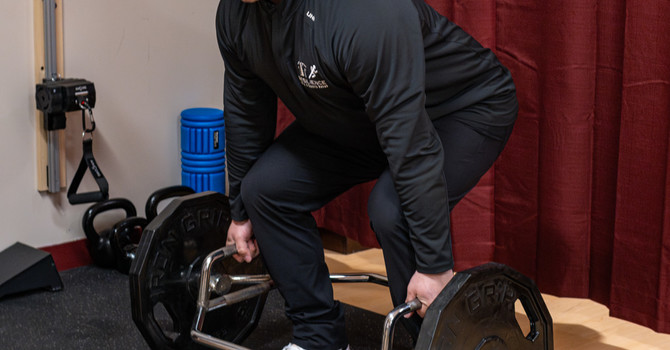.jpg)
Are you seeing progress with your chiropractic care or conservative-based care? If not, it might be time to consider incorporating exercise into your treatment plan. As a chiropractor dedicated to my patients' well-being, I recognize the importance of continuously improving and adapting our approach to ensure the best possible outcomes.
In my journey as a healthcare professional, I've embraced the commitment to do no harm and always act in the best interest of my patients. This includes re-evaluating treatment strategies and considering alternative approaches if a patient isn't making progress with conservative care alone. If someone's condition isn't improving, it's crucial to pivot treatment methods. Implementing exercises that can easily be progressed and regressed are fundamental within this approach.
Every profession has its limitations, and unfortunately, some practitioners may not always prioritize the patient's best interests. It's essential to provide patients with education about their condition and ensure they understand the treatment plan. We adhere to the guidelines set forth by reputable organizations like the American College of Physicians (ACP), which advise against routine imaging for low back pain unless specific red flags are present, such as signs of serious underlying conditions.
One common concern among patients is the fear-mongering tactic used by some practitioners, who may exaggerate normal signs of aging or degeneration to pressure individuals into lengthy and expensive treatment plans. At Resilience Spine & Sports Rehab, we prioritize transparency and honesty in our approach. We believe in empowering patients with knowledge and guiding them through evidence-based care pathways.
While spinal manipulation may provide temporary relief for some, research indicates that its effects are often short-lived without additional interventions. That's why we emphasize the integration of exercise into our treatment plans. Exercise not only complements spinal manipulation but also promotes long-term improvements in pain, function, and quality of life.
Unlike cookie-cutter approaches, our treatment plans are tailored to each individual's needs and progress. We schedule sessions in 2-3-week increments to allow for ongoing evaluation and adjustment of the treatment plan. Patient education is a priority, ensuring that individuals understand the purpose behind each intervention and how it contributes to their overall recovery.
For example, if we're working with a softball player recovering from an injury, our goal isn't just to manage pain but also to optimize movement patterns and functional capacity through targeted exercises. These exercises are specifically designed to address weaknesses, imbalances, and movement dysfunctions, ultimately helping patients regain strength, mobility, and confidence in their abilities.
It's important to recognize that effective rehabilitation often begins with exercise. While spinal manipulation may provide temporary relief, they're not a substitute for active interventions that target the underlying causes of pain and dysfunction. At Resilience Spine & Sports Rehab, we prioritize exercise as a cornerstone of our treatment approach, helping patients achieve lasting relief and optimal musculoskeletal health. In fact, we have a big "tool box" of various treatments to choose from.
Incorporating exercise into chiropractic care can lead to better outcomes and improved long-term results. By focusing on evidence-based practices, patient education, and individualized treatment plans, we strive to help our patients achieve lasting relief and optimal musculoskeletal health. If you're not seeing the progress you'd like with your current chiropractic care, consider exploring a more comprehensive approach that includes targeted exercise interventions. Your journey to recovery, strength, and limiting recurrence starts here!
References:
- American College of Physicians. (2017). Noninvasive Treatments for Acute, Subacute, and Chronic Low Back Pain: A Clinical Practice Guideline From the American College of Physicians. Annals of Internal Medicine, 166(7), 514–530. https://doi.org/10.7326/M16-2367
- Coulter, I. D., Crawford, C., Hurwitz, E. L., Vernon, H., Khorsan, R., Booth, M. S., Herman, P. M. (2018). Manipulation and Mobilization for Treating Chronic Low Back Pain: A Systematic Review and Meta-Analysis. The Spine Journal, 18(5), 866–879. https://doi.org/10.1016/j.spinee.2018.01.013
Watch Dr. Sarazen demonstrate one of our hundreds of exercises used to assist with low back pain
.jpg)
.jpg)



